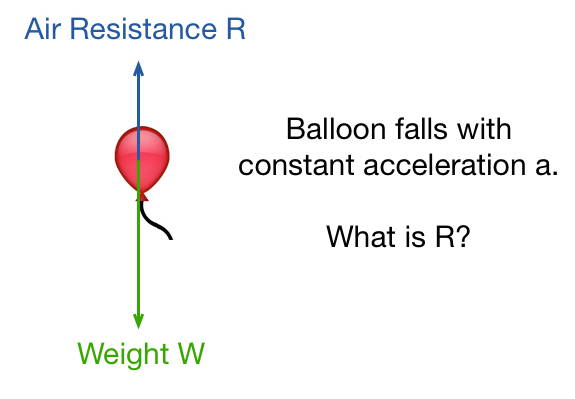Falling Balloon

A balloon of gross weight newton is falling vertically downward with a constant acceleration , find the magnitude of air resistance.
This section requires Javascript.
You are seeing this because something didn't load right. We suggest you, (a) try
refreshing the page, (b) enabling javascript if it is disabled on your browser and,
finally, (c)
loading the
non-javascript version of this page
. We're sorry about the hassle.
The air resistance is a force given by F a = m a r , where m is the mass of the balloon and a r , the deceleration due to air resistance. Therefore, we have:
F a = m a r We note that m = g W and a r = g − a = g W ( g − a ) = W ( 1 − g a )